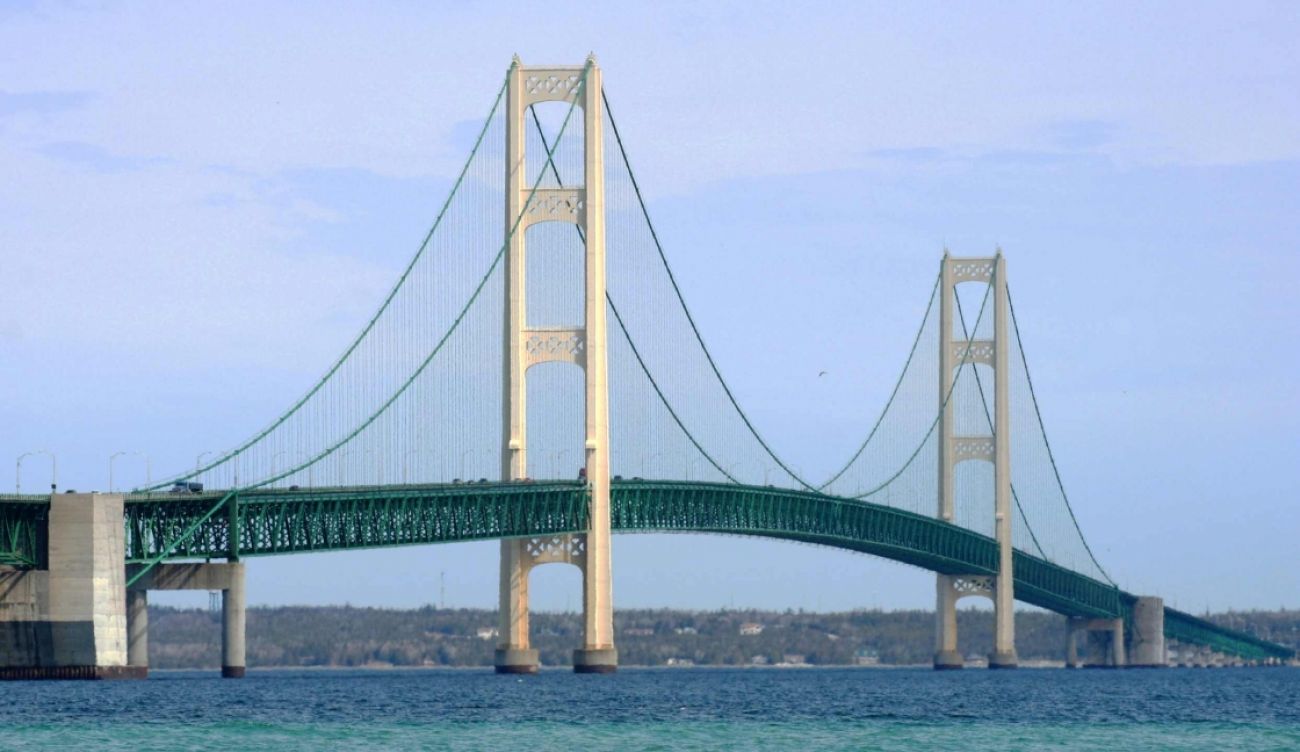Lawyers for Michigan argue to keep Enbridge Line 5 closed for safety

Line 5 will remain closed until further notice, after a judge declined to rule from the bench Tuesday on whether Enbridge can resume operating the petroleum pipeline in the Straits of Mackinac despite state officials’ concerns following damage to the pipeline.
The hearing Tuesday before Ingham County Circuit Court Judge James Jamo comes days after Jamo ordered the pipeline temporarily shuttered at the request of Attorney General Dana Nessel, following Enbridge’s discovery June 18 of “significant damage” to the dual span pipeline’s east leg.
After listening to more than four hours of debate Tuesday between lawyers for the state and Enbridge, Jamo said he needs time to review the issue before deciding whether the shutdown should continue.
“I will do so keeping in mind the urgency that everyone has tried to impress upon me,” he said.
- Michigan regulator: Enbridge needs permission to move Line 5 into tunnel
- Michigan judge orders temporary Enbridge Line 5 shutdown
- Enbridge Line 5 shut down after anchor support incurs ‘significant damage’
- Appeals court sides with Enbridge over Dana Nessel in Line 5 tunnel dispute
- Enbridge moves forward with Line 5 tunnel despite coronavirus lockdown
After Enbridge discovered the damaged anchor support June 18, the company stopped transporting oil and natural gas across the Straits while crews investigated. Two days later, Enbridge resumed operations on the west leg without seeking the state’s approval.
In response, Gov. Gretchen Whitmer blasted the move in a letter to the company’s CEO, and Nessel successfully petitioned Jamo for a restraining order temporarily shutting down the pipeline. She also sought an injunction to keep the line closed until Enbridge turns over key documents pertaining to the incident and demonstrates to the state that it is safe to reopen.
During Tuesday’s hearing, lawyers for the state and Enbridge presented competing arguments over whether Jamo should grant the injunction.
Nessel requested the temporary shutdown in connection with a broader lawsuit she has filed in hopes of permanently shutting down the pipeline. Jamo has given no indication of when he will rule in the larger case.
In Tuesday’s hearing, state lawyers asked Jamo to order two things: That Enbridge provide the state with all the available information about the recently-discovered damage, including an explanation of what caused the damage and how Enbridge will prevent future incidents; and that both spans of the pipeline remain closed until Enbridge “affirmatively demonstrates” it can safely resume operations.
Enbridge maintains the west leg can operate safely. Company lawyers told Jamo that inspections revealed no damage to the west leg, although divers noticed a patch of bare pipe that would normally be covered with mussels and other organisms.
Enbridge argues the missing mussels bear no relationship to the damaged anchor support on the east line. Instead, they said they suspect a “cable or other similar object” brushed across the west leg as it dangled from a boat traveling eastward across the Straits — an event that likely also caused damage that Enbridge reported in May to coating on the pipeline’s east leg.
State lawyers said they aren’t satisfied with Enbridge’s assurances that the west line is safe, because the company hasn’t provided the state with enough evidence to prove that point.
The state based its arguments for a shutdown in a 1953 easement granting Enbridge permission to site the pipeline in the straits. Under that agreement, Enbridge must practice “due care” in its operation of the Straits segment. State lawyers argued they cannot enforce that requirement without more clarity from Enbridge about the circumstances surrounding the damaged anchor support and missing mussels.
Particularly concerning to the state, Assistant Attorney General Robert Reichel said, is the fact that Enbridge has not determined exactly what hit the anchor support on the east leg, or when. Reichel said that raises questions about whether Enbridge is capable of quickly detecting and addressing future pipeline damage, “which, needless to say, from the state’s perspective is extremely concerning.”
Enbridge lawyer William Hassler conceded Tuesday that Enbridge officials don’t know when the anchor support was damaged, but they believe it occurred sometime in the past year. Hassler said Enbridge officials suspect an object dangling from “a vessel of modest size” struck the anchor support. Such a vessel, he said, is incapable of damaging the pipeline so badly that it couldn’t safely operate.
“The weight of any object it would drag is much, much, much less than the pipeline’s ability to resist that force,” Hassler said.
Enbridge, for its part, contends that federal regulation of interstate pipelines under the Pipeline Safety Act leaves the state with no authority to regulate Line 5’s safety, and thus no grounds to ask Jamo for a temporary shutdown. Regulatory duty lies with federal regulators in the Pipeline and Hazardous Materials Safety Administration, or PHMSA, Enbridge attorney David Coburn argued Tuesday.
“Duplicative state regulation will only enhance conflict and confusion,” Coburn argued. “It won’t enhance safety.”
Coburn and Hassler noted that PHSMA officials reviewed video footage and technical information pertaining to the recently-discovered damage and concluded the west leg can safely reopen. Enbridge officials have said they will not reopen the east leg without first notifying the state and gaining PHMSA’s consent.
om-nyx3rqwgp1v9ugfnp3lg-holderIn court filings, Enbridge lawyers said the company is stepping up safety protocols to prevent future damage, including deploying at least one additional boat to conduct 24-hour patrols of Line 5.
But Reichel said the state has little faith in Enbridge’s safety systems.
“Those systems didn’t prevent the impacts that affected both the east line and the west line here,” he said.
The controversy over Line 5’s safety comes as Enbridge pursues plans to replace the lakebottom dual-span with a new segment encased within a concrete-lined tunnel buried deep beneath the lakebottom, a move that it says would eliminate the possibility of a spill in the Straits.
On Thursday, Coburn argued that the best way for the state to ensure the safety of Line 5 going forward is to “stop litigating and start supporting the tunnel agreement.”
The hearing Tuesday began hours after the Michigan Public Service Commission ruled that Enbridge must gain its approval before it can move the pipeline into the planned tunnel, when and if it is constructed.
That ruling triggers a lengthy public review process during which the commission will consider a host of questions about the pipeline’s safety, design and environmental impacts, its usefulness to the public, and possible alternatives to the pipeline.
Michigan Environment Watch
Michigan Environment Watch examines how public policy, industry, and other factors interact with the state’s trove of natural resources.
- See full coverage
- Subscribe
- Share tips and questions with Bridge environment reporter Kelly House
Michigan Environment Watch is made possible by generous financial support from:
Our generous Environment Watch underwriters encourage Bridge Michigan readers to also support civic journalism by becoming Bridge members. Please consider joining today.
See what new members are saying about why they donated to Bridge Michigan:
- “In order for this information to be accurate and unbiased it must be underwritten by its readers, not by special interests.” - Larry S.
- “Not many other media sources report on the topics Bridge does.” - Susan B.
- “Your journalism is outstanding and rare these days.” - Mark S.
If you want to ensure the future of nonpartisan, nonprofit Michigan journalism, please become a member today. You, too, will be asked why you donated and maybe we'll feature your quote next time!






